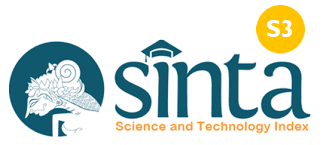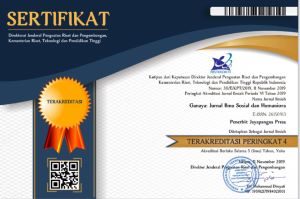Pendekatan STEAM-PjBL untuk Mengembangkan Scientific Creativity Siswa Kelas V Pada Topik Ekosistem dan Magnet
DOI:
https://doi.org/10.37329/cetta.v7i3.3416Keywords:
Scientific Creativity, STEAM-PjBL, Elementary School, Science LearningAbstract
This research aims to develop students' scientific creativity through the STEAM-PjBL approach. The issues identified during observation were that students were less active during lessons, not enthusiastic about attending classes, and did not pay attention to the teacher's explanations. This was due to the monotonous and less varied teaching methods used by the teacher. The STEAM-PjBL approach was chosen because of its significant impact on developing students' scientific creativity and fostering group collaboration in the context of science learning by relating it to everyday life. This study employs classroom action research with three cycles and two different projects. Data were collected through interviews, observations, reflective journals, researcher notes, and students' scientific creativity results. Unusual use, real advance, technical production, science imagination, science problem solving, creative experimental, and science product are aspects of scientific creativity. This research involved 30 fifth-grade elementary school students. Students worked in groups to create projects related to ecosystem and magnet topics. The results showed that the STEAM-PjBL approach on ecosystem and magnet topics developed scientific creativity. In cycle III, there was a significant improvement in the aspects of unusual use and science imagination, with an increase of 16.25% from the initial scores of 15.83% and 15.42%, respectively. The results of observations on learning activities using the STEAM-PjBL approach can stimulate and develop students' scientific creativity in a scientific context.
References
Albert, C., Brillinger, M., Guerrero, P., Gottwald, S., Henze, J., Schmidt, S., … Schröter, B. (2021). Planning nature-based solutions: Principles, steps, and insights. Ambio, 50(8), 1446–1461.
Amabile, T. M., Amabile, T. M., Collins, M. A., Conti, R., Phillips, E., Picariello, M., … Whitney, D. (2018). Creativity in Context (1st Editio). Boulder: Routledge.
Annisa, R., Effendi, M. H., & Damris. (2019). Peningkatan Kemampuan Berpikir Kreatif Siswa Dengan Menggunakan Model Project Based Learning Berbasis Steam (Science, Technology, Engineering, Arts Dan Mathematic) Pada Materi Asam Dan Basa Di Sman 11 Kota Jambi. Journal of The Indonesian Society of Integrated Chemistry, 10(2), 14–22.
Astuti, M. D., Fadiawati, N., & Saputra, A. (2019). Meningkatkan Keterampilan Berpikir Kreatif Siswa SMA Menggunakan Pembelajaran Berbasis Proyek Daur Ulang Minyak Jelantah. Jurnal Pendidikan Dan Pembelajaran Kimia, 8(2).
Ayas, M. B., & Sak, U. (2014). Objective measure of scientific creativity: Psychometric validity of the Creative Scientific Ability Test. Thinking Skills and Creativity, 13, 195–205.
Bruun, J. M., & Guasco, A. (2023). Reimagining the ‘fields’ of fieldwork. Dialogues in Human Geography.
Chung, C.-C., Huang, S.-L., Cheng, Y.-M., & Lou, S.-J. (2022). Using an iSTEAM project-based learning model for technology senior high school students: Design, development, and evaluation. International Journal of Technology and Design Education, 32(2), 905–941.
Genek, S. E., & Küçük, Z. D. (2020). Investigation of scientific creativity levels of elementary school students who enrolled in a stem program1-2. Elementary Education Online, 19(3), 1715–1728.
Herro, D., & Quigley, C. (2017). Exploring teachers’ perceptions of STEAM teaching through professional development: implications for teacher educators. Professional Development in Education, 43(3), 416–438.
Hu, W., & Adey, P. (2002). A scientific creativity test for secondary school students. International Journal of Science Education, 24(4), 389–403.
Huang, C.-F., & Wang, K.-C. (2019). Comparative Analysis of Different Creativity Tests for the Prediction of Students’ Scientific Creativity. Creativity Research Journal, 31(4), 443–447.
Juliastari, J., Artayasa, I. P., & Merta, I. W. (2022). Pengaruh Pembelajaran Berbasis Proyek dengan Pendekatan Sains Teknologi Masyarakat terhadap Kreativitas Ilmiah Siswa. Jurnal Ilmiah Profesi Pendidikan, 7(2), 337–343.
Kessler, E. H. (2013). Componential Theory of Creativity. In Encyclopedia of Management Theory. 2455 Teller Road, Thousand Oaks, California 91320: SAGE Publications, Ltd.
Khalil, R., Godde, B., & Karim, A. A. (2019). The Link Between Creativity, Cognition, and Creative Drives and Underlying Neural Mechanisms. Frontiers in Neural Circuits, 13.
Kontra, C., Lyons, D. J., Fischer, S. M., & Beilock, S. L. (2015). Physical Experience Enhances Science Learning. Psychological Science, 26(6), 737–749.
Larimore, R. A. (2020). Preschool Science Education: A Vision for the Future. Early Childhood Education Journal, 48(6), 703–714. https://doi.org/10.1007/s10643-020-01033-9
Mukhopadhyay, R., & Sen, M. K. (2013). Scientific Creativity-A New Emerging Field of Research: Some Considerations. International Journal of Education and Psychological Research, 2(1), 1–9.
Neumann, C. J. (2007). Fostering creativity. EMBO Reports, 8(3), 202–206.
Newton, D., Wang, Y. (Linda), & Newton, L. (2022). ‘Allowing them to dream’: fostering creativity in mathematics undergraduates. Journal of Further and Higher Education, 46(10), 1334–1346.
Ngo, H. Q. T., & Phan, M. H. (2019). Design of an open platform for multi-disciplinary approach in project-based learning of an EPICS class. Electronics (Switzerland), 8(2).
Ozkan, G., & Topsakal, U. U. (2021). Exploring the effectiveness of STEAM design processes on middle school students’ creativity. International Journal of Technology and Design Education, 31(1), 95–116.
Piaget, J. (1974). Science of Education and the Psychology of the Child. Grossman.
Pramashela, A. D., Suwono, H., Sulisetijono, S., & Wulanningsih, U. A. (2023). The Influence of Project-based Learning Integrated STEAM on the Creative Thinking Skills. Bioedukasi, 21(2), 138.
Rahmawati, Y., Ridwan, A., Hadinugrahaningsih, T., & Soeprijanto. (2019). Developing critical and creative thinking skills through STEAM integration in chemistry learning. Journal of Physics: Conference Series, 1156(1).
Rahmawati, Yuli, Adriyawati, Utomo, E., & Mardiah, A. (2021). The integration of STEAM-project-based learning to train students critical thinking skills in science learning through electrical bell project. Journal of Physics: Conference Series, 2098(1).
Runco, M. A. (2012). Creative and Imaginative Thinking. In V. S. Ramachandran (Ed.), Encyclopedia of Human Behavior (Second Edition) (Second Edi, pp. 602–605). San Diego: Academic Press.
Sternberg, R. J., & Lubart, T. I. (1993). Creative Giftedness: A Multivariate Investment Approach. In Gifted Child Quarterly (Vol. 37).
Suryaningsih, S., & Nisa, F. A. (2021). Kontribusi Steam Project Based Learning Dalam Mengukur Keterampilan Proses Sains Dan Berpikir Kreatif Siswa. 2(6), 1097–1111.
Torkar, G., & Krašovec, U. (2019). Students’ attitudes toward forest ecosystem services, knowledge about ecology, and direct experience with forests. Ecosystem Services, 37(March).
Tran, N. H., Huang, C. F., Hsiao, K. H., Lin, K. L., & Hung, J. F. (2021). Investigation on the Influences of STEAM-Based Curriculum on Scientific Creativity of Elementary School Students. Frontiers in Education, 6(October), 1–8.
van Noordwijk, M. (2021). Agroforestry-Based Ecosystem Services: Reconciling Values of Humans and Nature in Sustainable Development. Land, 10(7), 699.
Wei, C. A., Deaton, M. L., Shume, T. J., Berardo, R., & Burnside, W. R. (2020). A framework for teaching socio-environmental problem-solving. Journal of Environmental Studies and Sciences, 10(4), 467–477.
Xu, S., Reiss, M. J., & Lodge, W. (2024). Comprehensive Scientific Creativity Assessment (C-SCA): A New Approach for Measuring Scientific Creativity in Secondary School Students. International Journal of Science and Mathematics Education.
Yakman, G., & Lee, H. (2012). Exploring the Exemplary STEAM Education in the U.S. as a Practical Educational Framework for Korea. Journal of The Korean Association For Science Education, 32(6), 1072–1086.
Downloads
Published
How to Cite
Issue
Section
License
Copyright (c) 2024 Dinda Candra Yulia, Yuli Rahmawati, Darsef Darwis

This work is licensed under a Creative Commons Attribution-ShareAlike 4.0 International License.
An author who publishes in the Cetta : Jurnal Ilmu Pendidikan agrees to the following terms:
- Author retains the copyright and grants the journal the right of first publication of the work simultaneously licensed under the Creative Commons Attribution-ShareAlike 4.0 License that allows others to share the work with an acknowledgement of the work's authorship and initial publication in this journal
- Author is able to enter into separate, additional contractual arrangements for the non-exclusive distribution of the journal's published version of the work (e.g., post it to an institutional repository or publish it in a book) with the acknowledgement of its initial publication in this journal.
- Author is permitted and encouraged to post his/her work online (e.g., in institutional repositories or on their website) prior to and during the submission process, as it can lead to productive exchanges, as well as earlier and greater citation of the published work (See The Effect of Open Access).
Read more about the Creative Commons Attribution-ShareAlike 4.0 Licence here: https://creativecommons.org/licenses/by-sa/4.0/.





